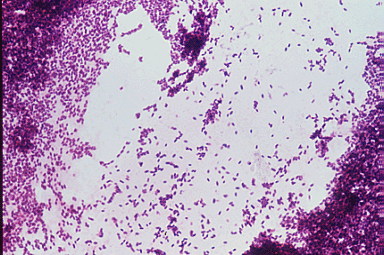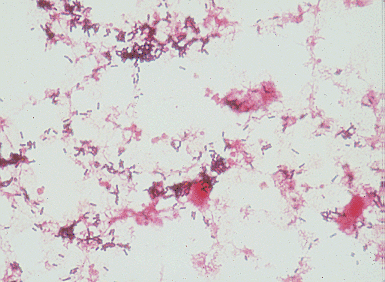
Listeria is a Gram-positive rod which is not capable of forming endospores. Although several species of this bacterium exist, our discussion will focus only on the two species of human pathogenic significance: L. monocytogenes and L. ivanovii. In particular, L. monocytogenes has been implicated in several food poisoning epidemics. This normal inhabitant of the gastrointestinal tract and of animal feces led to a 1986 outbreak in Massachusetts hospital patients. Those infected suffered from vomiting, nausea, and diarrhea. Apparently, the hospital patients contracted the microbe from the infected hospital food and were at high risk of infection. Those at high risk include newborns, pregnant women and their fetuses, the elderly, and persons lacking a healthy immune system. The bacterium usually causes septicemia and meningitis in patients with supressed immune function. It also causes listeriosis which is an inflammation of the brain. Antibiotics are recommended for treatment of infection because most strains of Listeria are sensitive to ampicillin and gentamicin.




